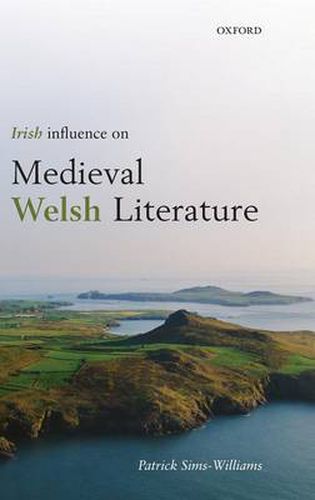Readings Newsletter
Become a Readings Member to make your shopping experience even easier.
Sign in or sign up for free!
You’re not far away from qualifying for FREE standard shipping within Australia
You’ve qualified for FREE standard shipping within Australia
The cart is loading…






In the Middle Ages Ireland’s extensive and now famous literature was unknown outside the Gaelic-speaking world of Ireland, Scotland, and the Isle of Man - with Wales an important exception. Irish emigrants had settled in Wales from the fifth century onwards, Irish scholars worked in Wales in the ninth century, and throughout the Middle Ages there were ecclesiastical, mercantile, and military contacts across the Irish Sea. From this standpoint, it is not surprising that the names of Irish heroes such as Cu Roi, Cu Chulainn, Finn, and Deirdre became known to Welsh poets, and that Irish narratives influenced the authors of the Welsh Mabinogion. Yet the Welsh and Irish languages were not mutually comprehensible, the degree to which the two countries still shared a common Celtic inheritance is contested, and Latin provided a convenient lingua franca. Could some of the similarities between the Irish and Welsh literatures be due to independent influences or even to coincidence? Patrick Sims-Williams provides a new approach to these controversial questions, situating them in the context of the rest of medieval literature and international folklore. The result is the first comprehensive estimation of the extent to which Irish literature influenced medieval Welsh literature. This book will be of interest not only to medievalists but to all those concerned with the problem of how to recognize and evaluate literary influence.
$9.00 standard shipping within Australia
FREE standard shipping within Australia for orders over $100.00
Express & International shipping calculated at checkout
In the Middle Ages Ireland’s extensive and now famous literature was unknown outside the Gaelic-speaking world of Ireland, Scotland, and the Isle of Man - with Wales an important exception. Irish emigrants had settled in Wales from the fifth century onwards, Irish scholars worked in Wales in the ninth century, and throughout the Middle Ages there were ecclesiastical, mercantile, and military contacts across the Irish Sea. From this standpoint, it is not surprising that the names of Irish heroes such as Cu Roi, Cu Chulainn, Finn, and Deirdre became known to Welsh poets, and that Irish narratives influenced the authors of the Welsh Mabinogion. Yet the Welsh and Irish languages were not mutually comprehensible, the degree to which the two countries still shared a common Celtic inheritance is contested, and Latin provided a convenient lingua franca. Could some of the similarities between the Irish and Welsh literatures be due to independent influences or even to coincidence? Patrick Sims-Williams provides a new approach to these controversial questions, situating them in the context of the rest of medieval literature and international folklore. The result is the first comprehensive estimation of the extent to which Irish literature influenced medieval Welsh literature. This book will be of interest not only to medievalists but to all those concerned with the problem of how to recognize and evaluate literary influence.